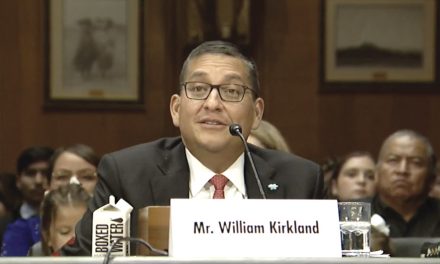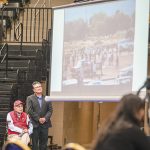
50 Years Ago: Council considers constitution vote
By Bill Donovan
Special to the Times
No one ever thought it would happen, but this week 50 years ago the Navajo Tribal Council actually decided to give the Navajo people a chance to weigh in on what was one of the most controversial subjects of the past 30 years on the Navajo Reservation – should the tribe have a constitution?
Back in the 1930s, officials for the U.S. Interior Department began putting pressure on the Navajo government to approve a constitution, pointing out that most tribes had one and it didn’t make sense that the biggest tribe of them all, the Navajo, did not.
The problem the federal officials faced in convincing Navajo leaders they needed a constitution was its timing. This came at the same time that the federal government was conducting a reservation-wide stock reduction program to reduce overgrazing.
Hundreds of thousands of sheep, horses and cattle were slaughtered in front of the eyes of Navajo ranchers who, in 1968, still talked about the event as one of the worst in the history of the tribe.
So when Indian agents began promoting the idea of a constitution, many Navajo ranchers thought it was being done to make it easier for federal officials to control how many livestock Navajo ranchers could have.
But, on the other hand, there was also a segment of the Navajo population who looked upon the idea favorably, saying it would, for the first time, give the Navajo people a voice in the type of government that would rule over the reservation.
So what changed in 1968? One name: Raymond Nakai.
Now in his sixth year as tribal chairman, Nakai had control over the Council and he had been saying for years that the tribe needed a constitution.
For one reason, he believed federal officials when they told him it would be beneficial to the tribe.
So, using his power, he pushed members if the Council to approve a resolution that would one day put the matter to a vote in a referendum. The measure was approved by a vote of 46-9 with two members abstaining.
The resolution didn’t give a date for the referendum but it pointed out that a draft constitution, based on the U.S. Constitution and some state constitutions, had been written up and all it needed before it could be out to a vote, was a little tuning up.
The Navajo Times that week printed a copy of the draft constitution and said that this was the first of several drafts over the past decades that has gone to the Council for consideration.
The Times also pointed out to its readers that the present form of government was created by federal officials who wanted a way to get approval from tribal members for mineral leases that were under consideration. The federal government never expected that form of government to continue more than a few years.
So what did the draft constitution propose?
If approved it would create a three-branch government, much like the one the Council finally put in place in 1990 after the suspension of then-chairman Peter MacDonald. It would also create a Bill of Rights, much like the one that is now in place.
“This is only a sample to be used by the Navajo people,” Nakai said in presenting the draft to the Council. He added that the tribe now had an opportunity to tell traditional leaders and others to make the changes necessary to arrive at a document that truly reflects the wisdom and desire of the Navajo people.
Nakai also pointed out that this discussion comes at a time when the tribe has never been richer with more then $50 million in the bank and annual revenue from mineral leases alone of more than $13 million.
Nakai was very confident that by the end of his second term, the tribe would have constitution in place. So what happened?
By opening up a discussion among tribal members about what should be in the constitution, Nakai misjudged the power he had to influence them. There were still a lot of people who never wanted the idea to go to a vote and there were equally as many who had different ideas of what it should contain.
Of course, by now, most of what was in the constitution – the three-branch government and the Bill of Rights have been implemented. But this was all done by Council action. The Navajo voter has never had an opportunity to this day to say what type of government they would live under. This still comes up frequently in discussions of whether the tribe should have a constitution.
And, by the way, this was the week that voters in New Mexico elected Leo Watchman Sr. to the state Legislature for the first time, representing parts of McKinley and San Juan counties.
He would hold that position for more than 24 years and was considered one of the top leaders in the state House of Representatives. He was credited with bringing a lot of state funds to chapters he represented.
[php sippet=3]








 Highway 264,
Highway 264, I-40, WB @ Winslow
I-40, WB @ Winslow